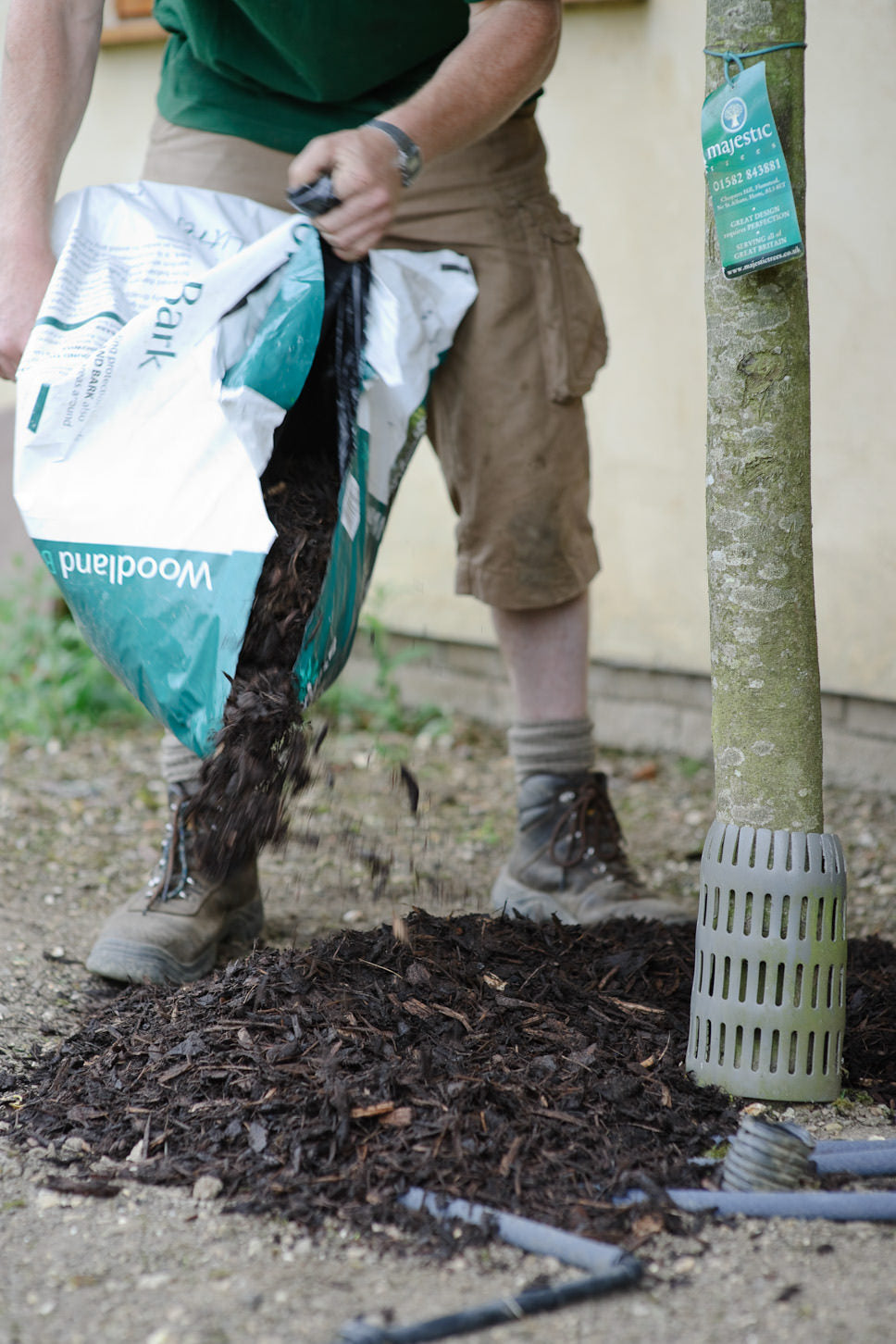Surface weeds and grass will be quick to exploit the extra soil moisture your watering will create. It is important they are removed (or at least mowed) regularly, to prevent them from competing with your trees for water.
If your landscape is amenable, mulching is an excellent way to suppress weeds. Further, it reduces environmental stress by providing trees with a stable root environment that is cooler and contains more moisture than the surrounding soil. Mulch can also prevent mechanical damage by keeping machines such as lawnmowers and strimmers away from the tree's base. (Note: this type of mechanical damage is very common and can be fatal to your trees if the bark and cambium layer is cut.)
A two to four inch deep layer of loosely packed shredded leaves, pine straw, peat moss, or wood chips is adequate. Plastic should not be used because it interferes with the exchange of gases between soil and air, which inhibits root growth. Thicker mulch layers, five to six inches or greater, may also inhibit gas exchange.
Ideally, mulch should be placed over the entire root area of the tree, which may be as far as two to three times the diameter of the branch spread of the tree, once it is fully established. If the area and activities happening around the tree do not permit the entire area to be mulched, as is often the case, simply mulch as much of the area under the canopy of the tree as is practical. When placing mulch, care should be taken not to cover the actual trunk of the tree. A mulch-free ring around the base of the trunk, about one or two inches wide, is sufficient to avoid moist bark conditions and prevent trunk decay.


